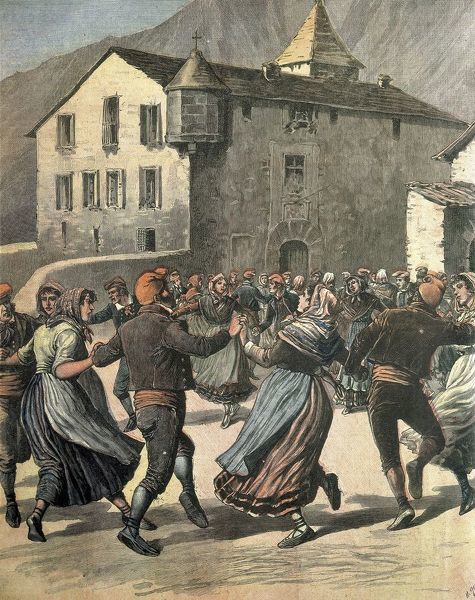Andorra
The Principality of Andorra is a tiny, independent landlocked state situated in the eastern Pyrenees Mountains, nestled between the Kingdoms of France and Spain. Despite its small size, it has maintained its sovereignty through a unique political arrangement and strategic diplomacy. The principality has little in the way of natural wealth, relying instead on its geographical position, resilient population and expertise in mountain trade and survival.
Contents
Historically, Andorra has been known for its role in smuggling taxable goods across its borders, taking advantage of the complex and often inconsistent trade laws of its larger neighbours. The principality's remote location and difficult terrain make it challenging for outside authorities to enforce taxation or customs controls, allowing its people to develop an intricate system of clandestine trade that includes forgery, hidden supply routes and a thriving black market. The Andorran people, known for their resourcefulness and discretion, have built a reputation as skilled merchants, guides and negotiators, balancing their economy between legal and illicit commerce while avoiding direct confrontation with larger powers.
Andorrans enjoy a notably low tax burden, but they are obligated to pay a modest tribute every two years to both the Bishop of Urgel and the King of France. This arrangement, known as paréage, was established to maintain Andorra's autonomy while acknowledging the authority of both rulers. The tribute to the Bishop of Urgel consists of traditional goods, including pesetas, hams, chickens and cheeses, representing a historical connection to the region's agrarian economy. Meanwhile, the King of France is entitled to an ancient monetary fee, a symbolic but mandatory payment that secures Andorra's continued recognition as an independent principality. Although the sums involved are small, failure to pay could be used as justification for either power to assert greater control over the territory, making these tributes essential to Andorra's delicate political balance.
The Principality covers an area of 1.5 hexes and has a population of 1,670. It shares borders with the County of Foix, the County of Urgel, the Marquesate of Lerida and the County of Couserans.
Geography
Andorra consists predominantly of rugged mountains, featuring the high peak of Coma Pedrosa, which rises to 9,652 feet. The small region is dissected by narrow valleys, which channel the flow of the Gran Valira River, the principality's primary waterway, draining southward into Urgel. A small portion of the northwest drains into neighboring France. This rugged terrain has historically served as a natural fortress, shaping Andorra's cultural identity and reinforcing its political independence. The difficult-to-traverse landscape makes large-scale military occupation unappealing to potential invaders, while Andorra's scattered settlements are mostly located along river valleys and trade routes, ensuring access to fresh water and facilitating commerce with both France and Spain.
History
The region is the sole surviving vestige of the Spanish March, a defensive territory established by Charlemagne in 795 to shield Christian France from the advance of the Moors. According to tradition, Charlemagne is revered as the founding figure of Andorra, having granted its people protection in return for their loyalty. His son, Louis the Pious, later formalised this arrangement by bestowing upon the inhabitants a charter of liberty, often referred to as the Andorran "Magna Carta." This document affirmed their rights and freedoms, ensuring that Andorra remained distinct from the surrounding feudal territories.
Andorra's unique independence can be traced to a thirteenth-century dispute between the Bishop of Urgel and the Count of Foix, two powerful lords who both laid claim to the principality. The conflict was resolved in 1278 through an agreement known as the Pariatjes, which divided sovereignty over Andorra between them. Under this arrangement, Andorra swore allegiance to both rulers, ensuring that neither could claim full control. This system of dual suzerainty still exists today, with the Bishop of Urgel and the French head of state serving as Andorra's co-princes. Despite centuries of political change, this medieval compact endures, a rare example of an unbroken feudal arrangement that has preserved Andorra's autonomy for over 700 years.
